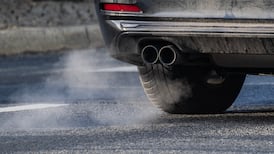The Environmental Protection Agency has issued a report on waste enforcement at licensed sites in 2013. It shows wide variations in performance among landfill, incineration, composting and storage-and-transfer sites. Some sites had operated within their licence conditions. Others only met these standards after EPA intervention. A minority violated them so gravely that the agency had to prosecute, and it secured six convictions, including convictions against directors, with substantial fines. Indeed, prosecutions in the waste industry are disproportionate, accounting for half the cases taken by the EPA in 2013, though it only holds 15 per cent of EPA licences. Some 92 per cent of the 547 complaints received by the agency in that year related to odour; five sites accounted for two thirds of those complaints.
The Irish Waste Management Association yesterday said the report failed to note significant investment by its members, especially in odour-abatement technology and storage techniques. But while complaints have declined greatly since 2009, they still indicate a much higher level of discomfort, and sometimes danger, than the public should have to tolerate. The EPA does acknowledge narrow economic margins in the industry. Low wages, which triggered a bitter Greyhound dispute in 2014 and severely impacted service to the public, fall outside the report's brief but should be addressed in any global assessment. Increasing the landfill levy has had the desired effect of reducing the amount of landfilled waste.
The EPA gently reminds the Government that its waste policy, published in 2012, calls for radically enhanced centralisation and co-ordination between the agency and local authorities, especially to combat crime in this sector. This policy should be fully implemented. Two other questions urgently need to be considered. How can we, as producers and consumers, generate less waste in the first place? And why are we not moving faster to develop environmentally safe waste-to-energy processes, rather than exporting waste to this growing industry?










